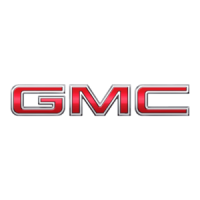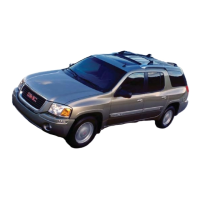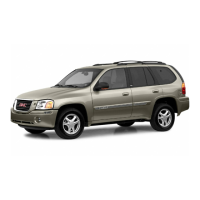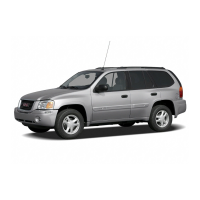
Do you have a question about the GMC ENVOY XL 2004 and is the answer not in the manual?
| Brand | GMC |
|---|---|
| Model | ENVOY XL 2004 |
| Category | Automobile |
| Language | English |
Adjusting power seats, lumbar support, and seatback recline for optimal comfort and safety.
Proper usage, importance, and safety considerations for all occupants, including pregnant women.
Guidelines for using child seats, including older children, infants, and proper positioning.
Information on frontal and side impact airbags, their operation, and safety precautions.
Detailed instructions for adults on wearing lap-shoulder belts correctly for optimal protection.
Guidance on wearing safety belts correctly and safely during pregnancy.
Emphasizing the importance of buckling up rear seat passengers for safety and preventing injury.
Guidance for older children who have outgrown booster seats, emphasizing proper vehicle safety belt use.
Explains the need for appropriate child restraints for infants and young children, and dangers of adult belts.
Details different types of child restraint systems, including infant car beds and forward-facing seats.
Explains the function and importance of the top strap for restraining child seats during collisions.
Explains the LATCH system for easier child restraint installation without vehicle seat belts.
Identifies the locations of frontal and side impact airbags in the vehicle's steering wheel and seatbacks.
Explains the conditions and impact severity required for frontal and side airbags to deploy.
Regular inspection of safety belts, buckles, and airbag covers to ensure proper function and safety.
Guidance on inspecting and replacing restraint system components after a collision for continued safety.
Information on the vehicle's double-sided key and the importance of keeping the key code number safe.
Details on locking and unlocking mechanisms, including power locks and security features.
Covers ignition positions, starting procedures, break-in guidelines, and transmission operation.
Explains automatic dimming rearview mirror, compass, calibration, and curb view assist features.
Discusses safety implications of unlocked doors and how to use manual and power lock mechanisms.
Details options for programming automatic door locking behavior based on gear selection or vehicle speed.
Describes the different ignition key positions (LOCK, ACCESSORY, RUN, START) and their functions.
Details the various gear shift lever positions (PARK, REVERSE, NEUTRAL, DRIVE) and their operational guidelines.
Explains the operation of the automatic transfer case and its different modes (2HI, A4WD, 4HI, 4LO).
Covers the features of the auto-dimming mirror, including OnStar integration and compass operation.
Provides instructions on how to calibrate the vehicle's compass for accurate directional readings.
Introduces the OnStar system, its services, and contact information for subscriptions and support.
Step-by-step guide to programming the HomeLink system to control garage doors and other devices.
Instructions on how to open and use the vehicle's glove box for storage.
Describes features commonly found in the overhead console, such as sunglasses storage and sunroof controls.
Explains the use and features of the vehicle's luggage carrier, including crossrail adjustment and cargo loading.
Explains how to save and recall personalized settings for driver's seat, mirrors, and pedals.
Provides a labeled diagram and description of the main components of the instrument panel.
Explains the operation of the climate control system, including fan speed, mode selection, and temperature adjustments.
Explains the function of various warning lights and gages to alert the driver of vehicle issues.
Explains the DIC display, operation, and how to access trip information, fuel economy, and personalization settings.
Explains how to use the dual climate control system for heating, cooling, and ventilation.
Guides on placing the climate control system in automatic mode for temperature, mode, and fan speed control.
Provides an overview of the instrument panel cluster layout and its gauges.
Explains the Service Engine Soon/Check Engine light (OBD II system) and its indication of emission control system issues.
Explains how the fuel gage indicates the amount of fuel remaining in the tank.
Explains how the DIC operates, displays information, and acknowledges warning messages.
Lists and explains various DIC messages that notify the driver of vehicle status changes or required actions.
Details options for programming automatic door locking behavior based on gear selection or vehicle speed.
Explains how to save and recall preferred driver seat, mirror, and pedal positions.
Instructions for setting the vehicle's clock and synchronizing it with RDS broadcast time.
Details the operation of the radio with CD player, including base and Bose systems.
Information on XM Satellite Radio service, channels, and subscription requirements.
Instructions on inserting, playing, and controlling CDs, including handling CD-R discs and error messages.
Emphasizes defensive driving techniques and awareness of road conditions and vehicle dynamics.
Details the severe dangers of alcohol impairment on driving skills and its impact on crash fatalities.
Covers perception and reaction time, stopping distances, and factors affecting braking performance.
Details the Traction Assist System for limiting wheel spin and improving traction on slippery surfaces.
Emphasizes proactive driving habits, anticipating hazards, and maintaining safe following distances.
Details the severe dangers of alcohol impairment on driving skills and its impact on crash fatalities.
Explains the three types of skids (braking, steering, acceleration) and how to handle them.
Explains how trailer weight affects vehicle performance and lists maximum trailer weights based on vehicle configuration.
Details requirements for trailer brakes and how they integrate with the vehicle's hydraulic system.
Emphasizes the importance of dealer service and using genuine GM parts for optimal vehicle performance.
Covers gasoline octane requirements, specifications, California fuel, and additives for optimal engine performance.
Explains how to check engine oil level, when to add oil, and what type of oil to use for optimal engine health.
Details brake fluid type, checking the level, and the importance of proper brake system maintenance.
Guides on checking the oil level and adding oil if it is low, emphasizing the correct type and amount.
Details the recommended engine oil specifications (GM Standard GM6094M, SAE viscosity) for optimal engine performance.
Provides instructions and safety precautions for adding coolant to the recovery tank or radiator.
Details symptoms and actions to take if the engine overheats, including safety precautions regarding steam and fire.
Details brake fluid type, checking the level, and the importance of proper brake system maintenance.
Explains how to identify worn brake pads through warning sounds and the importance of timely replacement.
Provides a step-by-step guide for safely jump-starting a vehicle using another vehicle and jumper cables.
Guides on checking tire pressure, understanding recommended pressures, and the dangers of under/overinflation.
Explains the importance of regular tire inspection and rotation for uniform wear and vehicle safety.
Provides indicators for determining when tires need replacement, such as treadwear indicators and visible damage.
Details how to access and remove the spare tire and associated tools stored under the vehicle.
Explains the function of the secondary latch system designed to prevent the spare tire from falling.
Guides on cleaning interior surfaces like fabric, carpet, vinyl, and leather.
Provides instructions for washing the vehicle's exterior, including paint finish care and protecting bright metal parts.
Shows the location of the engine compartment fuse block and how to access it.
Details the necessity of following maintenance intervals, checks, and using specified fluids for warranty coverage.
Outlines scheduled maintenance services (Maintenance I and II) based on mileage and time intervals, triggered by the CHANGE ENGINE OIL light.
Lists services required at specific mileage intervals, including fuel system, exhaust system, and transmission fluid checks.
Provides a template for recording maintenance services performed, including date, odometer reading, and services rendered.
Outlines procedures for resolving customer concerns and provides contact information for assistance.
Details the GMC Roadside Assistance program, services provided under warranty, and contact information.
Guides on reporting vehicle safety defects to NHTSA, Canadian Government, and General Motors.
Details services provided under the Bumper-to-Bumper warranty, including fuel delivery and lock-out assistance.












